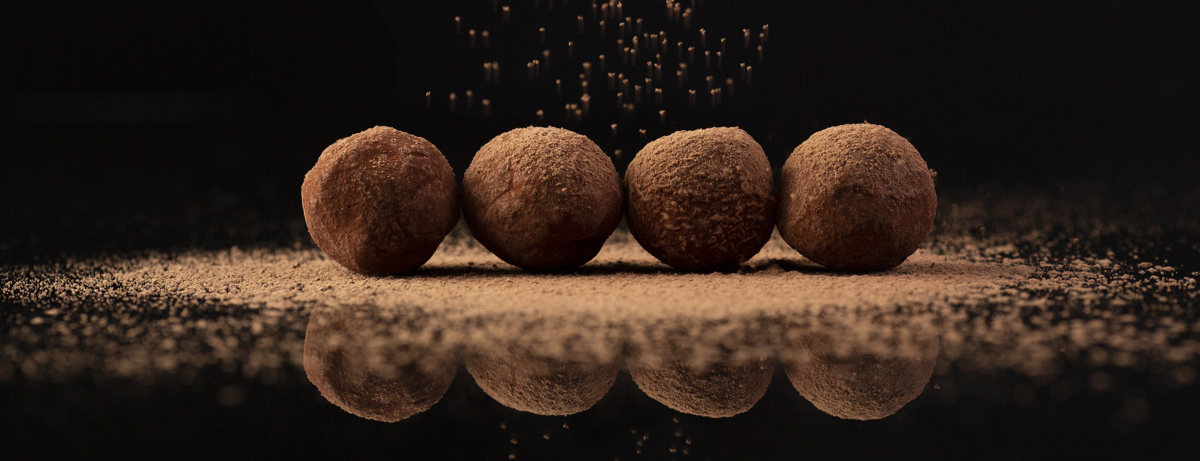

APPLICATION
Dusting of chocolate truffles with a cocoa powder
A chocolate “truffle” is a soft or hard chocolate confectionery centre on which a powder – cocoa or else – is dusted to enhance the appeal and the taste.
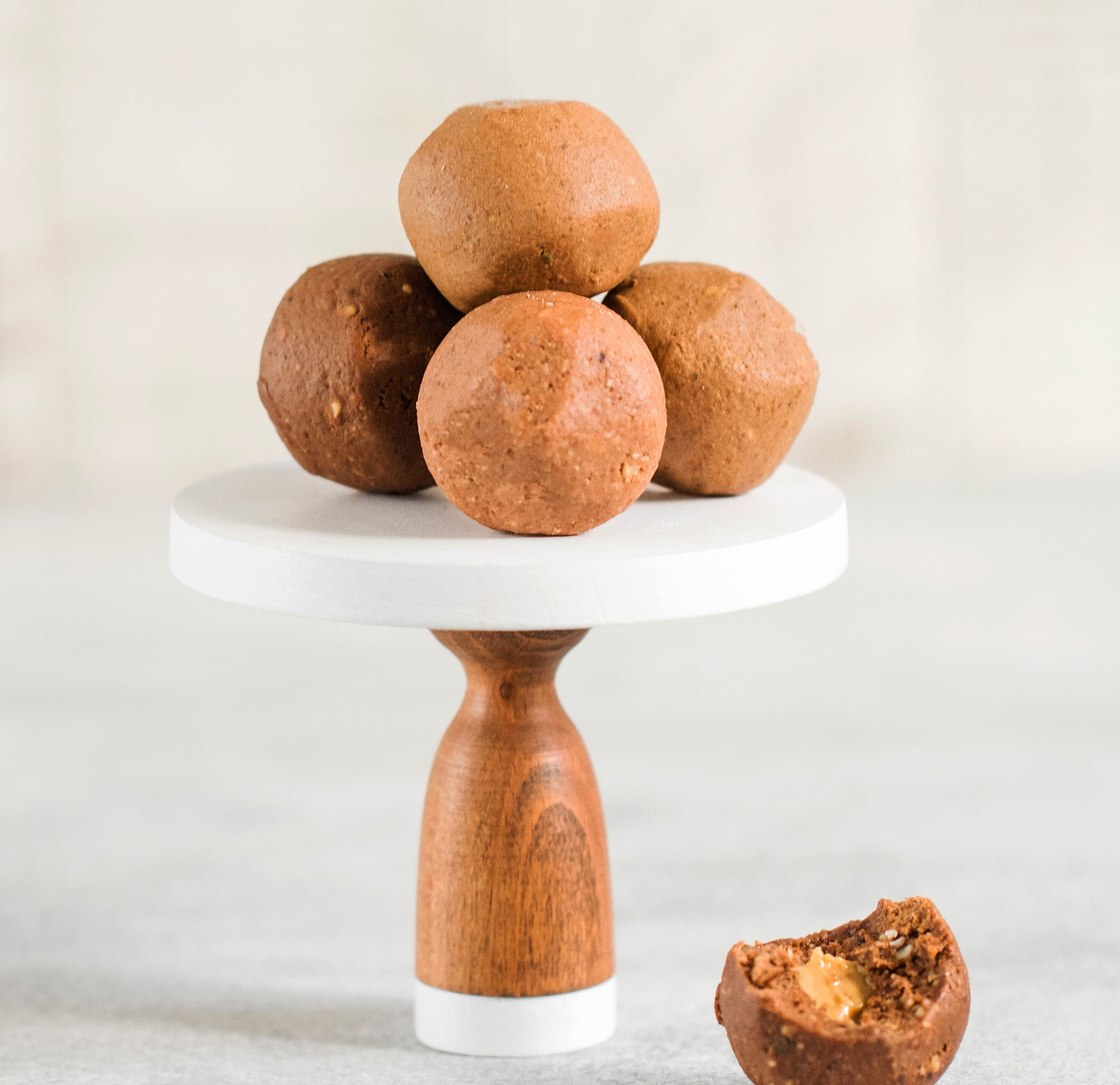

BASE
Core products
The core product is made of varying mixes of chocolate, cocoa powder, dairy cream, and fat. Then, a moulding or an extrusion process obtains the shape.
Depending on the forming process, the surface will be respectively hard and dry or soft and sticky (due to the cocoa fat content).
Other masses can be used, such as fruit paste or marzipan.
RECIPE
Ingredients
If the core product results from moulding, its surface is generally “dry” and not sticky.
It requires the preliminary application of a sticking medium to trap the powder:
- Fluid chocolate – see the Chocolate enrobing process
- A hydrocolloid solution is an alternative.
If the core product results from an extrusion process and its composition are adequate, the surface is “sticky” and ready to catch a powder.
The powder used for dusting is:
- Cocoa powder is the apparent choice
- Icing sugar
- Fruit powders
- Any other suitable fine powder, such as exotic ground spices (cinnamon, red pepper)
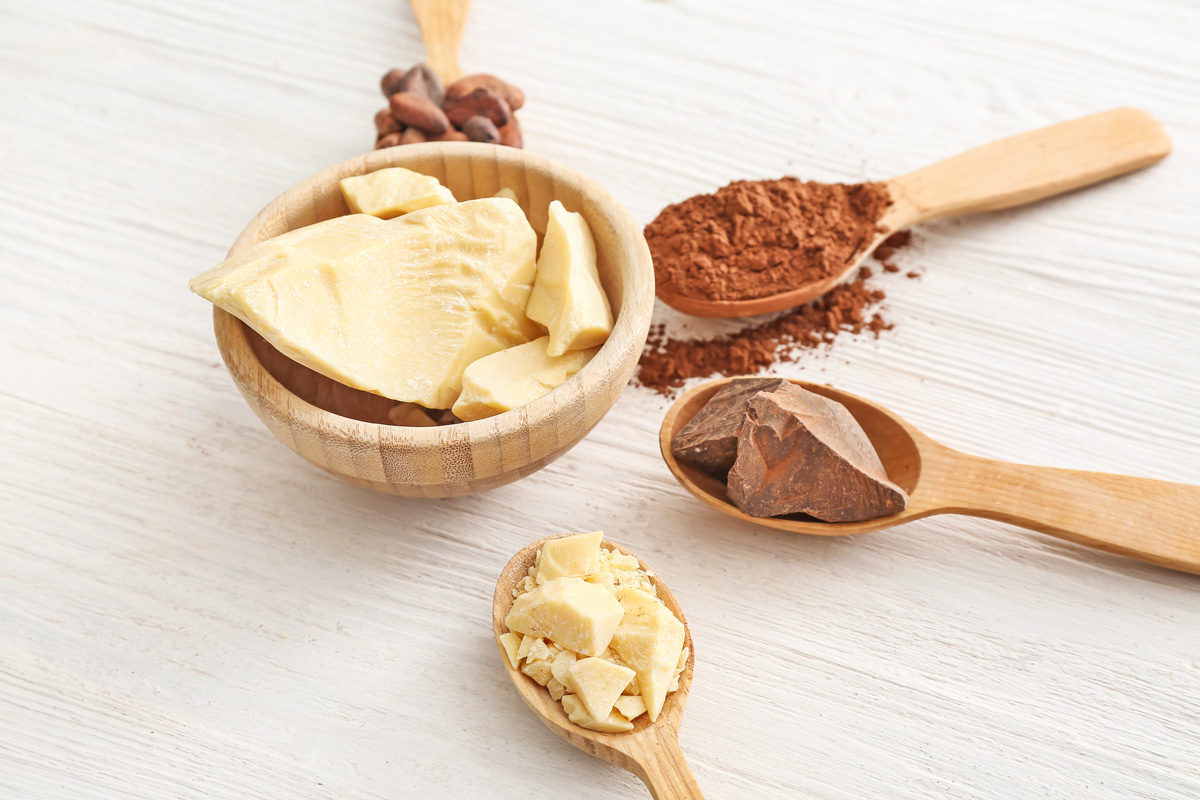





RECIPE
Ingredients
If the core product results from moulding, its surface is generally “dry” and not sticky.
It requires the preliminary application of a sticking medium to trap the powder:
- Fluid chocolate – see the Chocolate enrobing process
- A hydrocolloid solution is an alternative.
If the core product results from an extrusion process and its composition are adequate, the surface is “sticky” and ready to catch a powder.
The powder used for dusting is:
- Cocoa powder is the apparent choice
- Icing sugar
- Fruit powders
- Any other suitable fine powder, such as exotic ground spices (cinnamon, red pepper)
PROCESS
How does it work?
The wet or wetted truffles must be exposed to the cocoa powder and be tumbled in it. Subsequently, they must be separated from the bed of powder. The adhesion time is relatively short. The separation process should remove the powder not adhering to the sticking medium.
The excess powder is sifted to remove chocolate particles and recycled. Fresh powder is brought in to compensate for the powder used.
Step 1.
Enrobing with a chocolate layer or else.
Step 2.
They are powdering while tumbling.
Step 3.
We are separating the powder, sifting it, and continuously recycling it.
Step 4.
Cooling to set the chocolate layer.
PROCESS
Coating system
Different systems can be used to form a powder bed, tumble the truffles in it and separate them.
- A vibrating tray
- A mesh conveyor system is used to coat nuggets with breadcrumbs
- A rotating tumbler
- A rotating screw or twin-screw system
The choice of the tumbling motion drives the selection of the system. The sifting and recycling operations must also be considered carefully, as they are only possible to achieve losses and pollution.
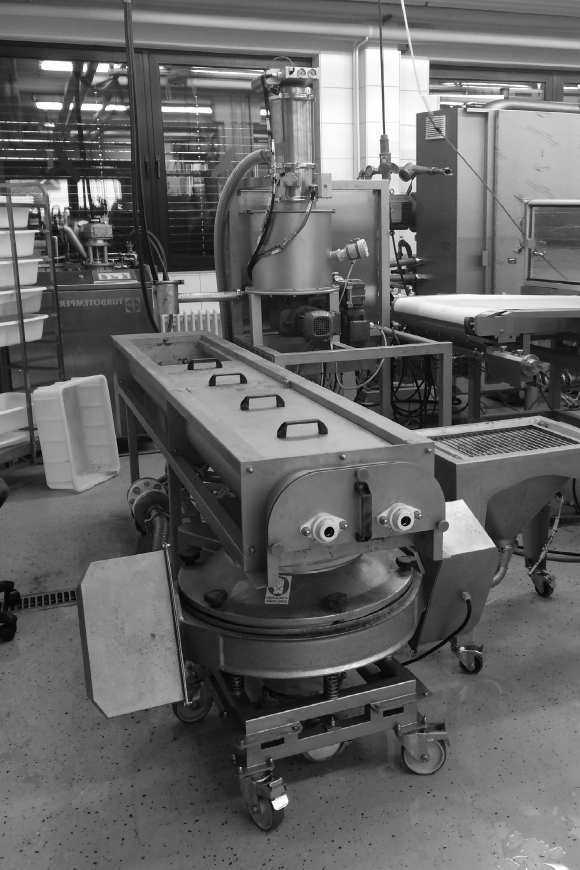

PROCESS
Coating system
Tumbling in a continuous screw system with a sieving and recycling zone is a solution. Example: twin-screw dusting system – Sugar InProcess.
PRODUCT EVALUATION
How do you measure your success?
Key quality features
The experience should be as close as possible to an artisanal cocoa-dusted truffle.
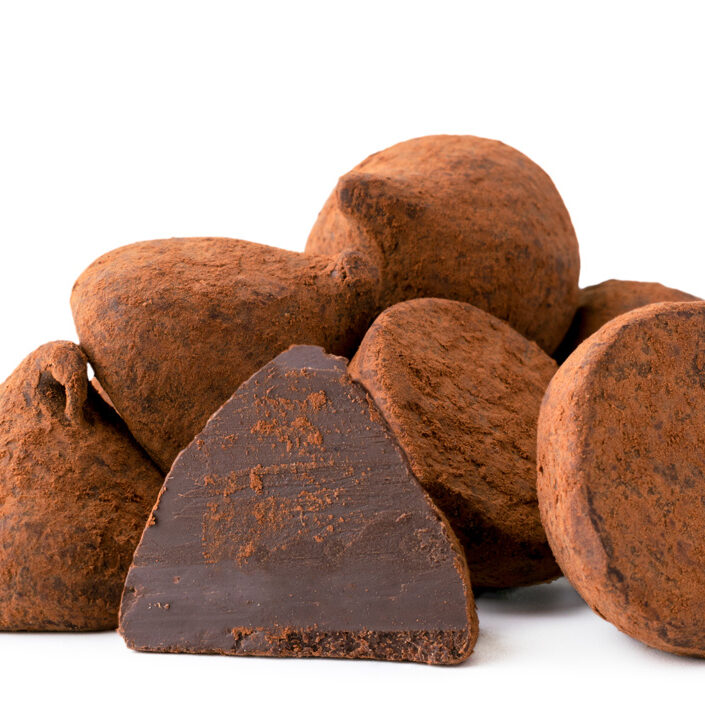

Surface aspect
Distribution of cocoa powder.
Product integrity
Deformation of the product up to a certain level may be desired.
Stability
The powder should hold and not be absorbed by the wet surface of the truffle.
Key quality parameters
The producer should master a set of parameters.


Powder type
It can be cocoa powder of specific fat content or dried fruit powder.
Design
The motion applied to the product depends on principle (conveyor, screw, vibrating tray), design, and operation (speed).
Temperature
The base being chocolate, carefully controlling the temperature during and beyond the process is critical.
APPLICATION
Discover more applications

